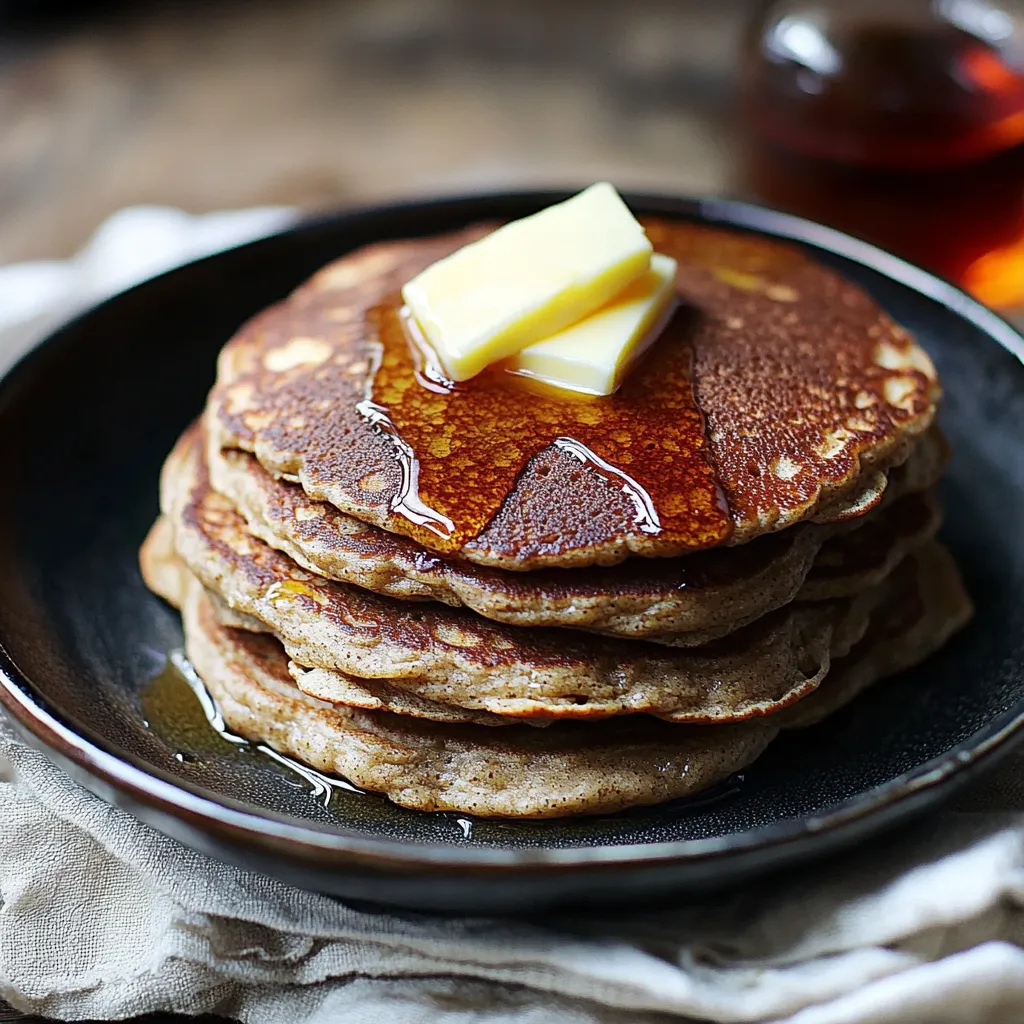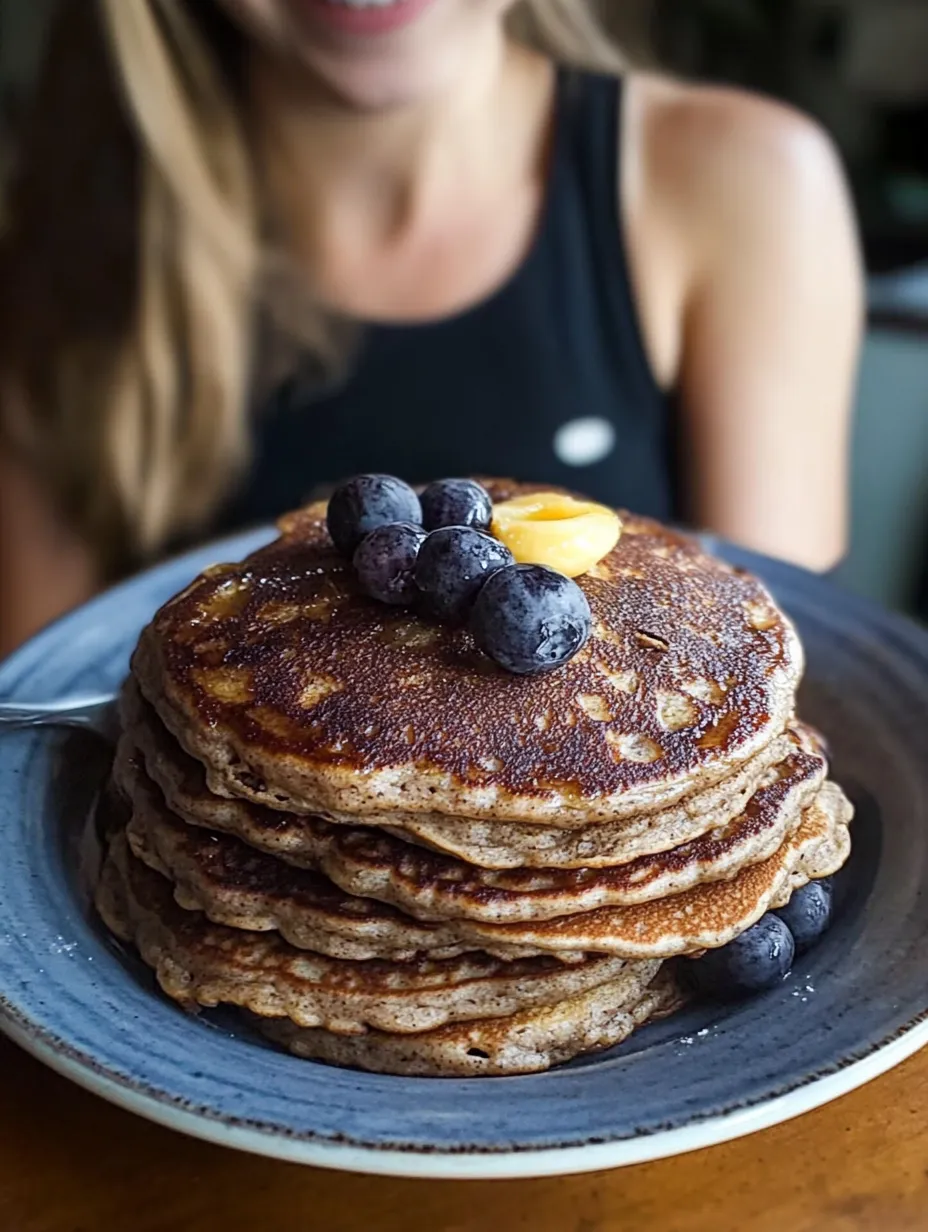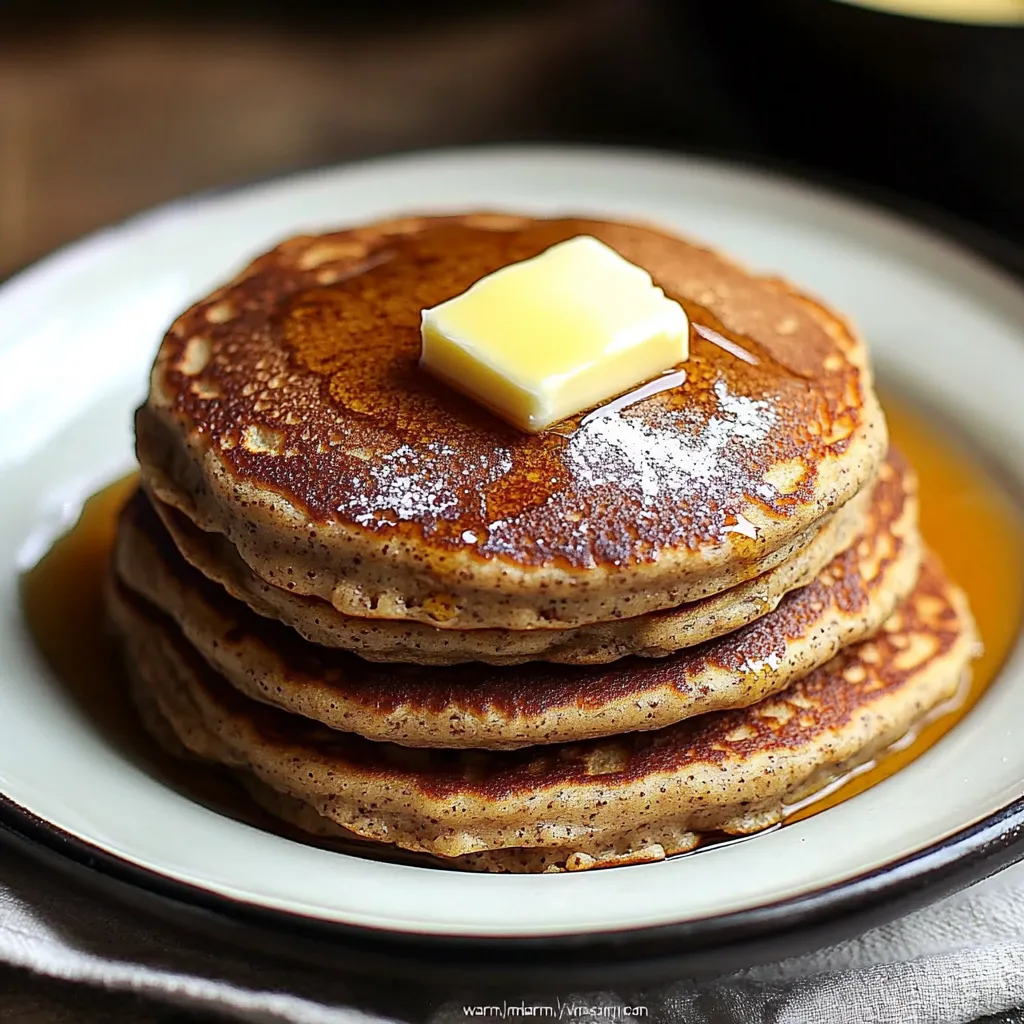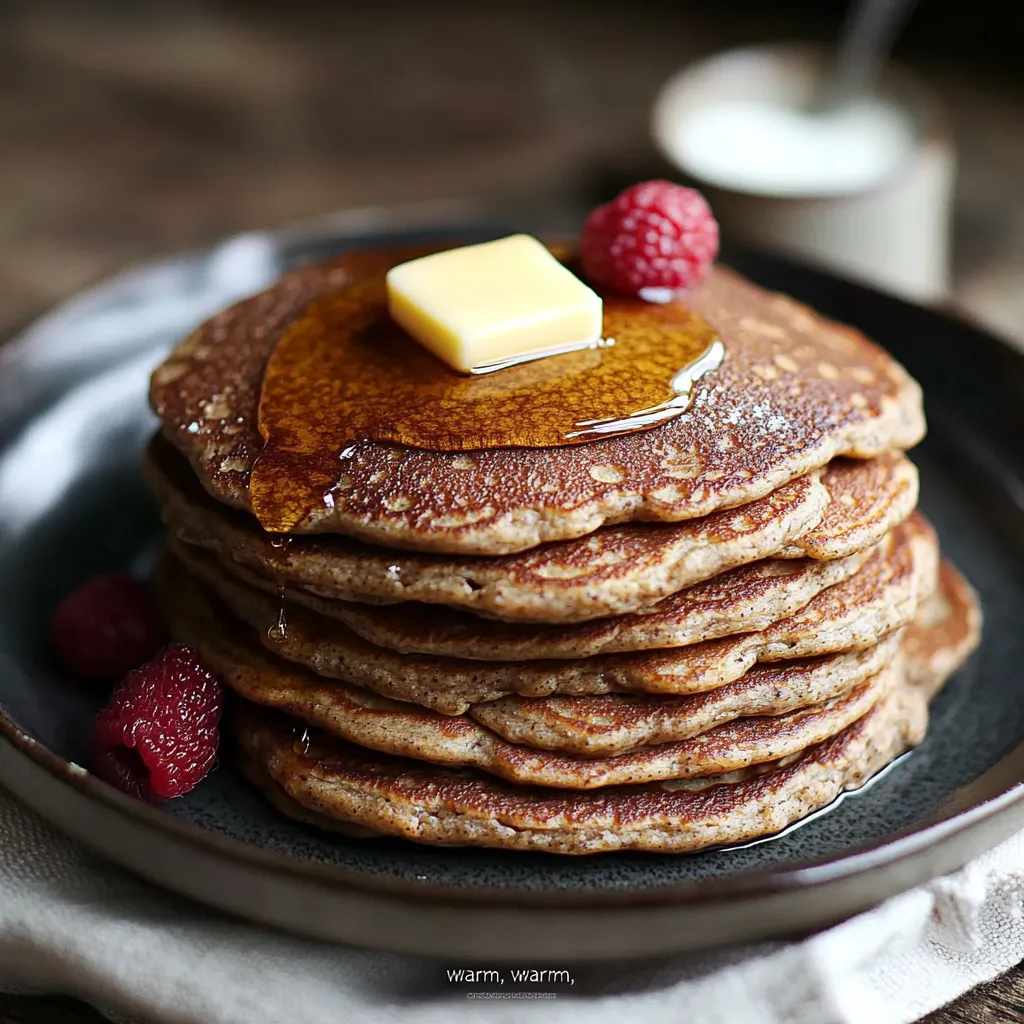 Pin it
Pin it
Buckwheat pancakes have this incredibly warm, earthy taste that just takes you back to those lazy mornings when breakfast wasn't rushed. After countless weekend pancake sessions, I've found that getting truly amazing buckwheat pancakes isn't just about throwing ingredients together – it's about really understanding how to bring out the best in this wonderful old-world grain.
I whipped these up for some friends staying over last weekend who'd never tried buckwheat before. They looked doubtful at first but fell in love with the first bite. What made the difference? Taking my time and knowing how everything works together.
Key Components and Shopping Advice
- Buckwheat Flour: Get something that smells fresh and nutty. The stone-ground stuff really delivers on flavor.
- Buttermilk: Go for full-fat and recent; its sourness makes all the difference for taste and texture.
- Butter: Melt it but let it cool a bit so it mixes into your batter without cooking your egg.
 Pin it
Pin it
Detailed Pancake Preparation
- Get your cooking surface ready:
- Put your pan on medium heat – giving it enough time to warm up properly is key.
- Blend dry stuff:
- Stir buckwheat and regular flours with sugar, salt, and baking soda until they're all mixed up. Make a hole in the middle to avoid overmixing later.
- Mix wet stuff:
- Beat your egg until it's bubbly, then stir in some buttermilk and your melted butter until smooth. Add more buttermilk bit by bit till it looks right.
- Put everything together:
- Pour the wet stuff into the hole in your dry mix. Fold it gently just until mixed, leaving some tiny lumps for softer pancakes.
- Let batter sit:
- Give your mix about 5 minutes to rest while your pan finishes heating up.
 Pin it
Pin it
Smart Flipping Technique
Keep a close eye on your pancakes while they cook. You'll see tiny bubbles form and burst, leaving little holes behind. The edges will start to look a bit dry and less shiny. That's when you know it's time to flip. Grab a thin, bendy spatula and flip with a quick, confident motion.
Controlling Your Heat
Keeping an eye on your heat level matters all throughout cooking. After you've made a few pancakes, your pan might get too hot – don't be afraid to turn it down or even lift it off the burner for a few seconds. If you notice any smoke, wipe the surface with a paper towel and let it cool down a bit before going on.
Building Your Breakfast Tradition
At my house, weekend pancakes have turned into a special tradition. I've started warming my oven on its lowest setting and putting a wire rack inside. As each pancake finishes cooking, it goes right onto that rack, staying warm and crispy while I finish the rest. This works so much better than stacking them, which just makes them soggy.
Topping Ideas and Twists
- Classic: Maple syrup
- Fresh: Berries and whipped cream
- Warm: Sautéed apples with cinnamon
- Nutty: Honey and chopped nuts
Historical Background
Buckwheat pancakes run deep in American farming history. They were common in places where tough buckwheat plants grew well, connecting us to our farming roots. Whenever I cook these pancakes, I think about all the cooks before me who watched for those same bubbles, waiting for just the right moment to flip their pancakes over.
Changing With The Seasons
- Autumn: Mix in some cinnamon and nutmeg, then top with cooked apples and toasted pecans.
- Summer: Stick fresh berries into the batter while it's cooking.
- Winter: Add some orange zest and pour dark honey over top.
- Spring: Mix in fresh mint and lemon for light, bright flavors.
Tools That Make A Difference
The pan you pick really matters. A well-used cast iron pan becomes your best friend for pancakes. It heats evenly and gets naturally non-stick over time. If you're using a non-stick pan, pick one with a heavy bottom that heats evenly. Always keep a thin, flexible spatula nearby – it slides under pancakes much better than thick ones do.
Prep-Ahead Options
- Mix your dry stuff the evening before and cover it well.
- Get your wet ingredients ready and keep them in the fridge.
- Make sure your pan is clean and ready to go.
- Set out your plates and toppings ahead of time.
 Pin it
Pin it
Saving Leftovers Successfully
- Let them cool completely on wire racks first.
- Put sheets of parchment paper between them.
- Store them in a sealed container in the fridge for up to three days.
- Warm them up quickly in your toaster or in a pan.
Closing Thoughts
Making truly great buckwheat pancakes comes down to feeling the rhythm between your ingredients, heat, and timing. Through many Sunday mornings at the stove, I've learned these pancakes will tell you when they're ready – you just need to watch for the signs.
The real charm of buckwheat pancakes isn't just how they taste but how they link us to cooking traditions while fitting perfectly into our busy lives. Whether you're enjoying them during a slow weekend brunch or warming them up for a quick workday breakfast, they remind us that food made with care feeds more than just your hunger.
Frequently Asked Questions
- → Can these be made without gluten?
- Absolutely! Just switch out the all-purpose flour for fully buckwheat flour or a gluten-free blend.
- → Are eggs required here?
- Nope, you can skip the egg! The pancakes still turn out soft and yummy.
- → How do I make quick buttermilk?
- Combine 2 cups of milk with 2 tablespoons of vinegar. Leave it for 5 minutes.
- → What's the secret to fluffy pancakes?
- Go easy on the mixing – lumps are fine! Also, make sure your baking soda is fresh.
- → Can I store these pancakes for later?
- Yes! Let them cool, separate with parchment paper, and freeze. Reheat in a toaster or microwave.
